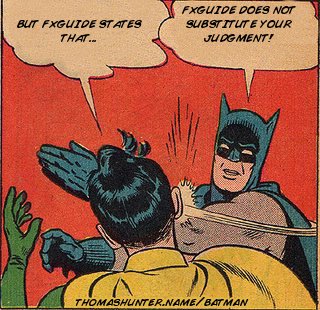fxguide and deep data
Par Narann le mercredi, 15 octobre 2014, 22:09 - Infographie 3D - Boulot - Lien permanent
 As you might know, I work mainly on animated features. I am often involved with productions and RnD departments to talk about incoming challenges, in particular on the lighting side.
As you might know, I work mainly on animated features. I am often involved with productions and RnD departments to talk about incoming challenges, in particular on the lighting side.
There are many situations where peoples argue how deep comp is canonical now and how it will change the face of the CGI... I'm often arguing it's not a "tiny" feature and, while it can be useful "sometime", it creates more troubles than it solve in practice, specially if its use is generalized (and on a animated feature you often need to "over-generalize" uses). Doing so, I'm facing to a lot of "What? But fxguide state a lot of animation studios use it! Dreamworks, Disney, etc...". 
I will not argue on the fact the projects I have to deal with are not running in such studios. I will not even argue about the actual budget compared to big production ones. I will simply quote something fxguide report and pray the various supervisors I have the opportunity to worked with will take this in consideration.
This article is not a shout against fxguide (I read it often and enjoy it a lot, their work is massive!) but mainly against peoples taking fxguide's articles as gospel while having no idea of technical implications using such high end techs fxguide talks about in real world production, specially on (sometime "low cost") animated features.
fxguide is one of the most popular CGI news website. It's one of the few (the only one?) providing a lot of articles/interviews of well known personality and high end techs used in CG.
Few days ago, I read this.
I tends to take lightly what fxguide states because it often obfuscate a lot of details which are very important in a productions situations (all the "what if" questions actually). It's the "everything goes smooth and rosy in the best world ever 'cause the flexibility of our internal tools allow us to deliver high end shots in deadlines with lower cost ever" syndrome (not surprising in the CGI) while the reality of the day to day job is more like:
(Joke  ).
).
So for the first time fxguide seems to report wise words about deep data in animated feature and it came from Hank Driskill, Technical Supervisor on Big Hero 6 (next Disney animated feature). If you are an animated feature supervisor, please consider this:
The renderer and pipeline can render with deep data. It was not used on all shots, however. “We use it sparingly just because of the data management concerns,” says Driskill, referring to the huge data sets complex deep data rendering can produce.
No kidding... Only Weta would have created a such heavy, massive and crazy stuff that deep data file format is. But the reality is you are often not at Weta (are they really rendering beauties with it?) and you are not working with the same budgets.
Notice the fxguide's "It was not used on all shots" following by contrasted Driskill's quote: "We use it sparingly". They both mean the same thing, just taking the problem by two different angle.
There is a huge gap between what fxguide reports and the artists work, RnD/production relation and the hard time you can have to deliver on time. There is a reason behind this: CGI is very shy when time to talk came. You can't blame that, that's the way things work in any big company. But you have to be aware of that when you read such informations: fxguide, and implicitly, you, don't have the whole story.
This brings fxguide to often have a big abstraction of how things actually run in a studio and how nuanced the stated reality can be (but which supervisor would tell: "This was a mess!" and rant over their in house tools?). This have to be kept in mind when you choose a technical solution based on what fxguide states, specially if you have limited experience on animated features that involve a huge data consistency management.
This might be obvious for a lot of peoples but as I've seen many supervisors taking fxguide as a reference to choose a technology based on according to the industry, I'm taking this opportunity to call for vigilance: You are artists, take the tool you known and move on!
For fun:

You will get more chances to deliver a show using a shitty tech you known than a high end tech you have no idea how to use and what it would imply. This has to be considered when you work with limited resources. 
Hope this help. You're welcome to comment, specially if you don't agree with me!
Dorian

If any fxguide staff member read this post: Don't take any offense, I'm just trying to show that some people can be very strongly influenced and make mistakes because your articles won't always covers the downside.

Commentaires
You made quite a few good points in this post, Dorian. Actually, almost all the information/know-how/technics given by the top CG web sites are only useful if you work at big, very big facilities. Reality is budget dictates the pipeline. Commercial work, for instance, requires a totally different approach than a feature film would do. Interestingly there's not much information on how commercial shops build their pipelines, how they handle data etc. etc.
We are even forced to use the tools used by the big studios.
Ozgur